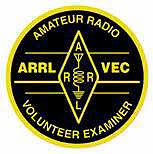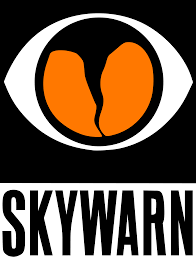The most basic “go-kit” item in the Amateur Radio Operator's bag of tricks is the Handheld Transceiver (HT). No, HT doesn't stand for handy-talky. While most of us own several HTs, and they are useful tools, especially when near repeaters, we also know that the HT, out of the box, makes for a pretty poor emergency station. The rubber-ducky antenna and lower voltage batteries often supplied with the radios, along with the lower power output HTs have are challenges to be overcome.
Let's take a look at some things that can improve HT performance:
- Purchase a higher gain antenna for the HT. The original manufacturers equipment (OEM) antenna that came with your HT is little more than a dummy load. Many aftermarket antenna manufacturers make replacement antennas for just about every HT. Talk to others with the same HT as yours and find out what they are using. A step up from that is a mobile antenna or even a base station antenna on a push-up pole. Antenna gain and height are the keys to overcoming marginal operations.
- Getting the antenna higher up almost always improves radio performance. Consider:
- Mount that higher gain, HT mounted antenna you purchased in 1 above on a wooden dowel, pole, broom handle, or small diameter PVC pipe that is long enough to get above the heads of obstructions. A couple zip ties can handle attaching the antenna. A small, hi-visibility flag attached to the top will help others find you in a parking lot or crowd.
- If mobile in a vehicle with a non-ferrous roof or at home, a magnetic mount mobile antenna on a kitchen oven baking sheet for a ground plane will vastly improve the signal strength. These can be used in a number of places where you need just a little better signal to get into a repeater. Ground plane kits that look more professional and have better wind characteristics than the pizza pan when mobile are available.
- A fixed station antenna with good feed-line and mounted on a stayed, push-up pole or portable mast, can be located further away from the operating position and outside in the clear will result in significantly better operation in otherwise marginal conditions when those trees get in the way or buildings are in the wrong place.
- Purchase additional batteries. If you run into extended operations or a high duty cycle event like a multi-day, disaster recovery deployment, the HT battery pack will be drained rather quickly. There are several options to consider:
- Purchase extra batteries or extended power batteries.
- Buy a battery pack and carry replacement batteries, generally of the AA variety. Alkaline batteries last longer but you won’t need to carry as many rechargeable batteries.
- If stationary, another option is a sealed lead acid battery (SLA) with a cable connector matched to your HT and appropriate battery connectors which will last much, much longer. You can also hook directly to your vehicle battery but care must be taken to keep the vehicle battery charged or you might find yourself stranded when the battery won’t start the vehicle.
- Higher voltage batteries. Many HTs can operate from 12V, but the batteries are usually 7.2V, so using a higher voltage battery will increase total watts output by the radio. Check your radio's specs to be sure yours is of this type of design.
- Purchase a quality headset. A headset will greatly improve your ability to hear in noisy environments, especially if the headset has noise cancellation or when reception is marginal. The headset will also prevent audio interference from others in the room, or interfering with them. Speaker mics are an improvement and generally fine if you are shadowing an event official but they lack the ability to isolate the audio to just yourself if somewhere it will interfere with others. Even an inexpensive ear plug like you would get for an AM/FM radio will greatly help but is not recommended because it doesn’t include a microphone. Getting a headset with a boom mic keeps the mic permanently next to your mouth (never in front; we talk across our mics not into them).
Keeping it all together.
As you gather items to expand your capabilities, you will want to keep everything together so it can be grabbed quickly. Visit any retail store’s home-wares section and buy a plastic storage box that will keep your items together and provide some level of protection. You’ll probably be carrying more than your portable ham shack, however, so pick up a backpack for your clipboard, writing utensils (another plastic box?), snacks, water, sunscreen, headlight, medical kit, etc. AND your ham shack in-a-box. Work several events like Public Service Events and go outside and work any of our ARES nets in the dark. Develop a list of what you used or needed so that a.) you’ll know what to pack and b.) you’ll know what sized bag to buy. Of course you’ll need more than your backpack when you advance to remote mobile radio and HF radio operations with portable generators, crank up towers, etc. but that’s for a different training.
To summarize, the HT can be made into an effective remote or mobile station for long term use by adding additional power sources, by using higher gain antennas, by increasing the height of antennas away from signal absorbing obstacles, and by using a backpack or toolbox to keep everything handy while on the move.




